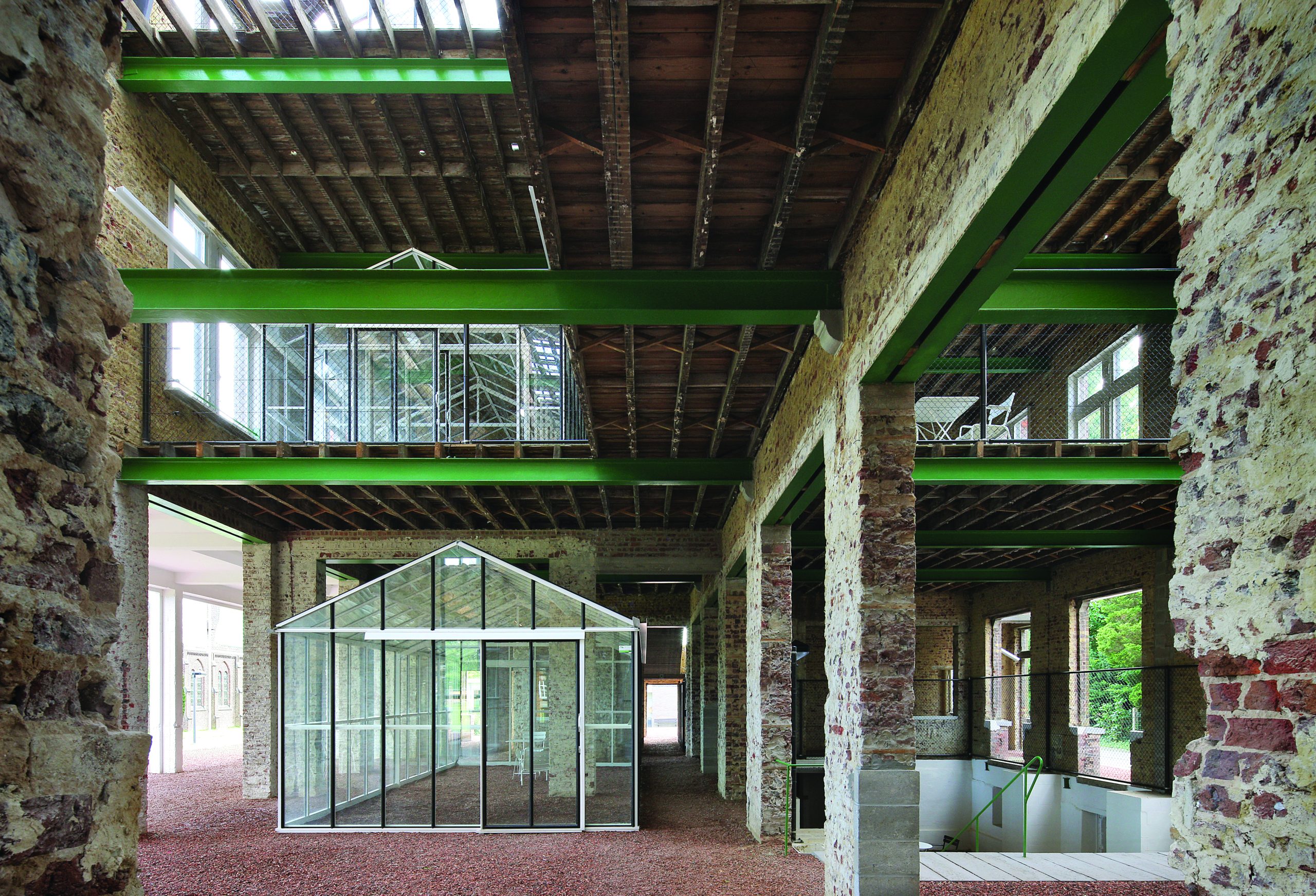
In the small Belgian town of Melle stands the Sint-Jozef edifice, an elegant nineteenth-century brick building surrounded by large outdoor green spaces. Part of the Psychiatric Center Caritas, the building as renovated by Vylder Vinck Taillieu features a series of spaces that blur the traditional opposition between indoor and outdoor, structure and envelop, public and private. Once a single monument, the building is now infiltrated by a series of glazed structures nested at its heart. Neither fully exposed to the outdoor weather nor totally climate controlled, it breaks any clear divisions between natural and artificial environments, visible and imperceptible events, individual and communal experiences. The superimposition and reformation of spaces transform the historical object into a spatial system of interferences. This ambivalence produces an architecture symbiotically defined by the dismantled brick structures and the pristine glass volumes, the fragmented histories of patients and the probability for the unfolding of new events. “The slow unfolding of the homely into the unhomely.”1
—Aaron Sprecher
Continue Reading:






